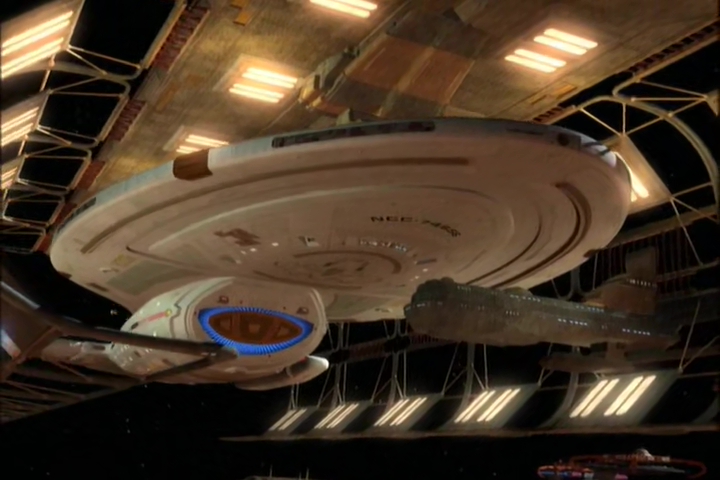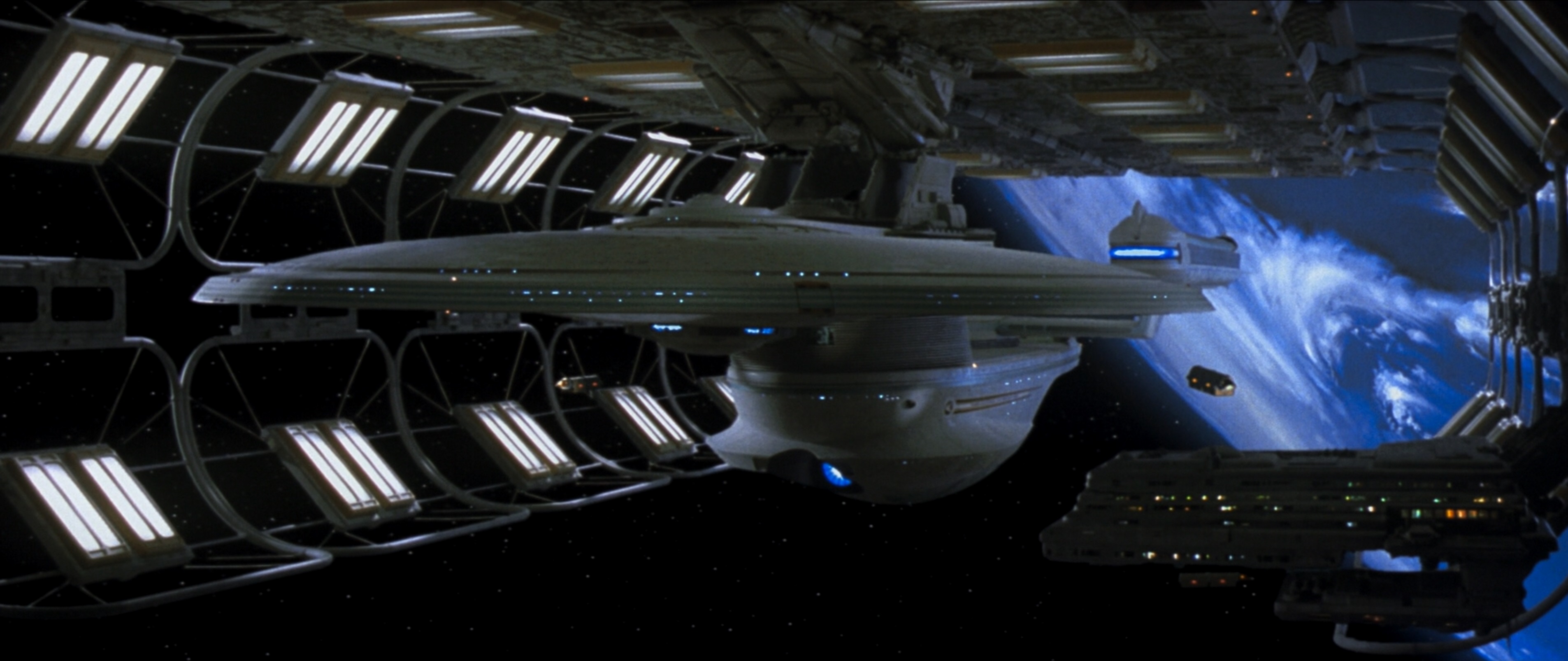BTW, here's a nice image of Voyager in one of the Utopia Planitia drydocks:
This is the same drydock model as the one seen in "Star Trek: Generations", the modified drydock model from TMP.
Well, i have a big question about this statement - I OWN the drydock, and received it in the Generations configuration, and can confirm that this looks nothing like what i got. I don't think this is a model i have seen - would guess that it is CGI.
Thoughts?
Are you NCC1701.US? Wow! Nice to see you here! I am in awe of your collection!
Perhaps it is indeed a CGI re-creation of the drydock. But comparing certain details on the drydocks in both Generations and Voyager, it appears to be the same model, perhaps lit differently so that it appears to be a different structure. Voyager and the Enterprise-B are two ships of vastly different size -- Voyager being approx. 343 meters and Enterprise-B being approx. 511 meters. Yet the ships look to be the same proportional size to the drydock. Something had to be done to make the drydock for Voyager look smaller. Maybe it was simply lighting, maybe it was CGI, but it had to be something.
As I'm sure you WELL know

, the Generations drydock had two rows of six 2-light panels (which were modified from the originals) within the latticework (the center rows and the seventh column were removed from the TMP model). The large support structure was added to the underside of the upper portion of the drydock (the hangar/workshop/office space). Also, an asymmetrical office and shuttle landing complex was added to the lower forward portion of the inner port framework. You make note of these changes on your Website.
These elements (seen in this image from Generations) compare very favorably to the drydock seen with Voyager in the image above. Differences in color could be the result of lighting, exposure, or the fact that Generations was shot with film while Voyager was shot with video (I think).
There was no other drydock of this configuration sold at any of the Star Trek memorabilia auctions. If they aren't the same model, then either there is another model hanging around somewhere, or it is a really good CGI re-creation.
Either way, thanks for the information, and especially thanks for restoring the TMP model to all of its original glory (and sharing the photos)!
BTW, since your Enterprise model isn't original, where is it from? Oh, and you can answer a question from earlier in the thread -- are there red and green nav lights on both ends of the drydock model, and if so what is their orientation?








 It is canon... after all.
It is canon... after all. 
